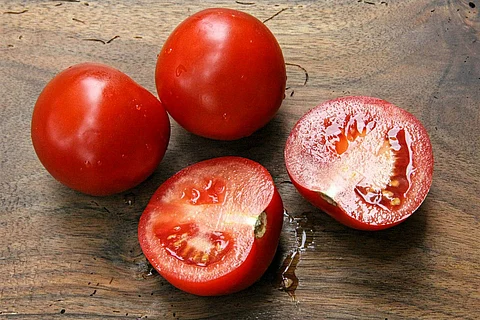

Tomato prices have been skyrocketing over the last fortnight and have left consumers red-faced. While Hyderabad recorded the steepest rise in the country with tomatoes selling at Rs 100/kg, prices have risen exorbitantly in other parts as well.
According to a report in India Today, tomato prices have risen by more than 300 percent than the usual rates this season.
So why is the humble vegetable burning a hole in people’s pockets and throwing budgets off track?
Well, the answer lies in the extreme weather that India has experienced this year as well as the lack of cold storage facilities.
Drought, heat wave and unseasonal rain
Keshav SH, marketing manager at Horticultural Producers’ Cooperative Marketing and Processing Society (HOPCOM) had told TNM that due to the water shortage as well as the drought, farmers sowed the crop late.
Normally, the tomato crop is sown in March-April. However, this year, farmers planted tomato only in May after the first rain. However, the future showers did more harm than good.
“After 45 days of fruiting, the crops got damaged following heavy rainfall,” said Keshav.
Similar damage happened to the crop in other parts of the country as well, leading to a shortage of tomato supply in the market and hence, the steep rise in prices. While prices do experience a surge at this time of the year, the unprecedented surge owes itself to the shorter supply.
Similar trends were observed up north where the crop got damaged due to unseasonal rains and the unnatural heat wave.
"With temperatures exceeding 40 degree Celsius, 90% of the flowers and leaves of plants dropped during April 10 to May 15. There is so less crop available that hardly 10% of the tomato farmers will benefit by the current high prices," said Sriram Gadhave, president of the All India Vegetable Growers' Association to the Economic Times.
Tomato farmers in Punjab and Haryana, the northern belt and Maharshtra suffered major losses due to the same, leading to the surge in prices in neighboring areas. In Delhi for instance, the price of one kilo of tomatoes rose to Rs 58 from the Rs 38 price range within a fortnight.
Reports also predict that the price will continue to remain high for the next two months as the local produce has been harvested. The next batch will come only in August-September, which is expected to bring down the cost.
Shorter shelf life and lack of storage
Unlike potatoes and onions, tomatoes have a shorter shelf life, which is another reason why the government cannot use the Price Stabilisation Fund to bring down prices.
States majorily cultivating tomato in the country are Karnataka, Andhra Pradesh, Telangana, Madhya Pradesh, West Bengal and Odisha. Their problems were further aggravated due to the lack of cold storage facilities in the country.
While the expected tomato output for 2015-16 crop year (July-June) was 18.28 million tonnes, the figures may have to be revised in September after assessing damages.